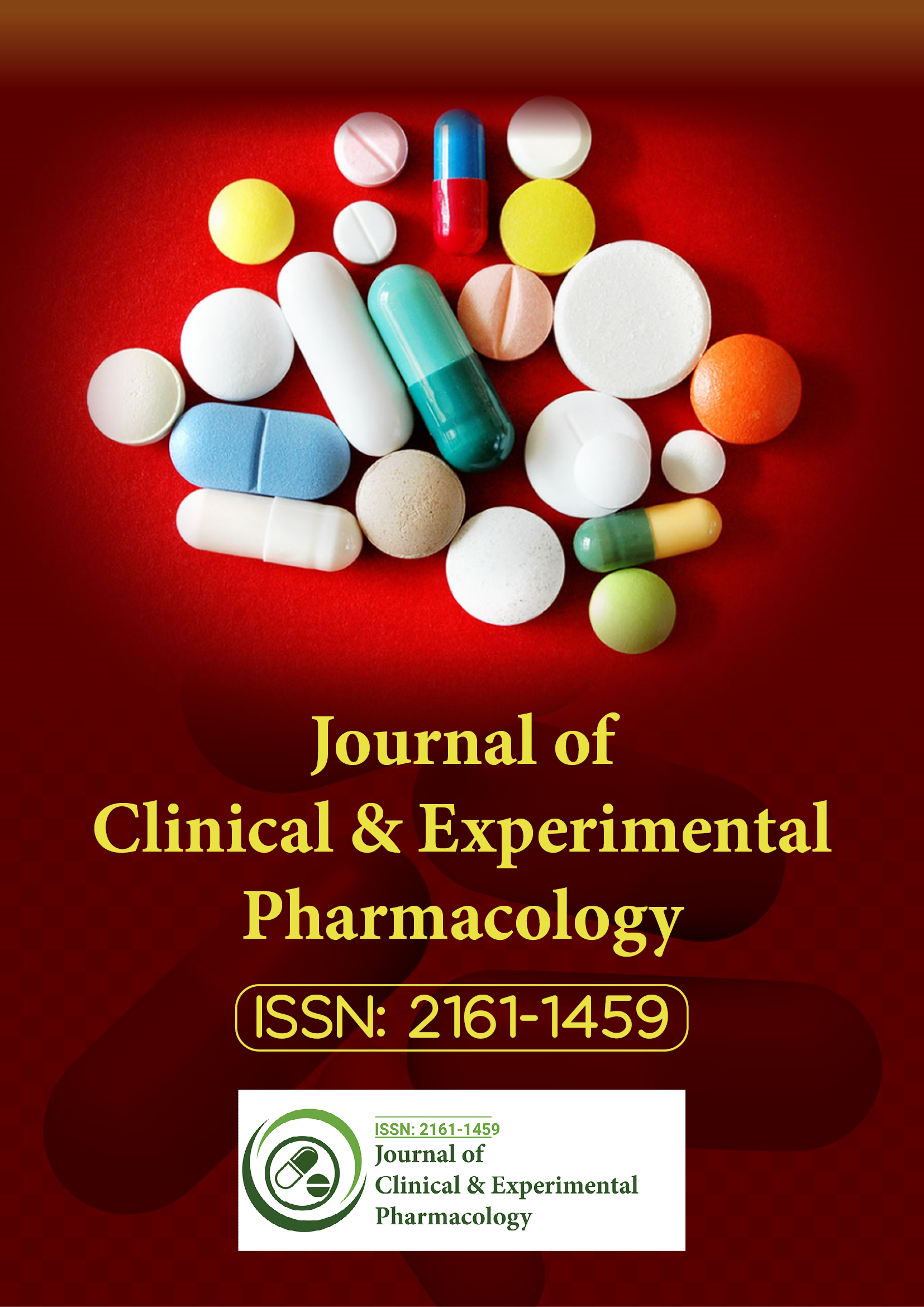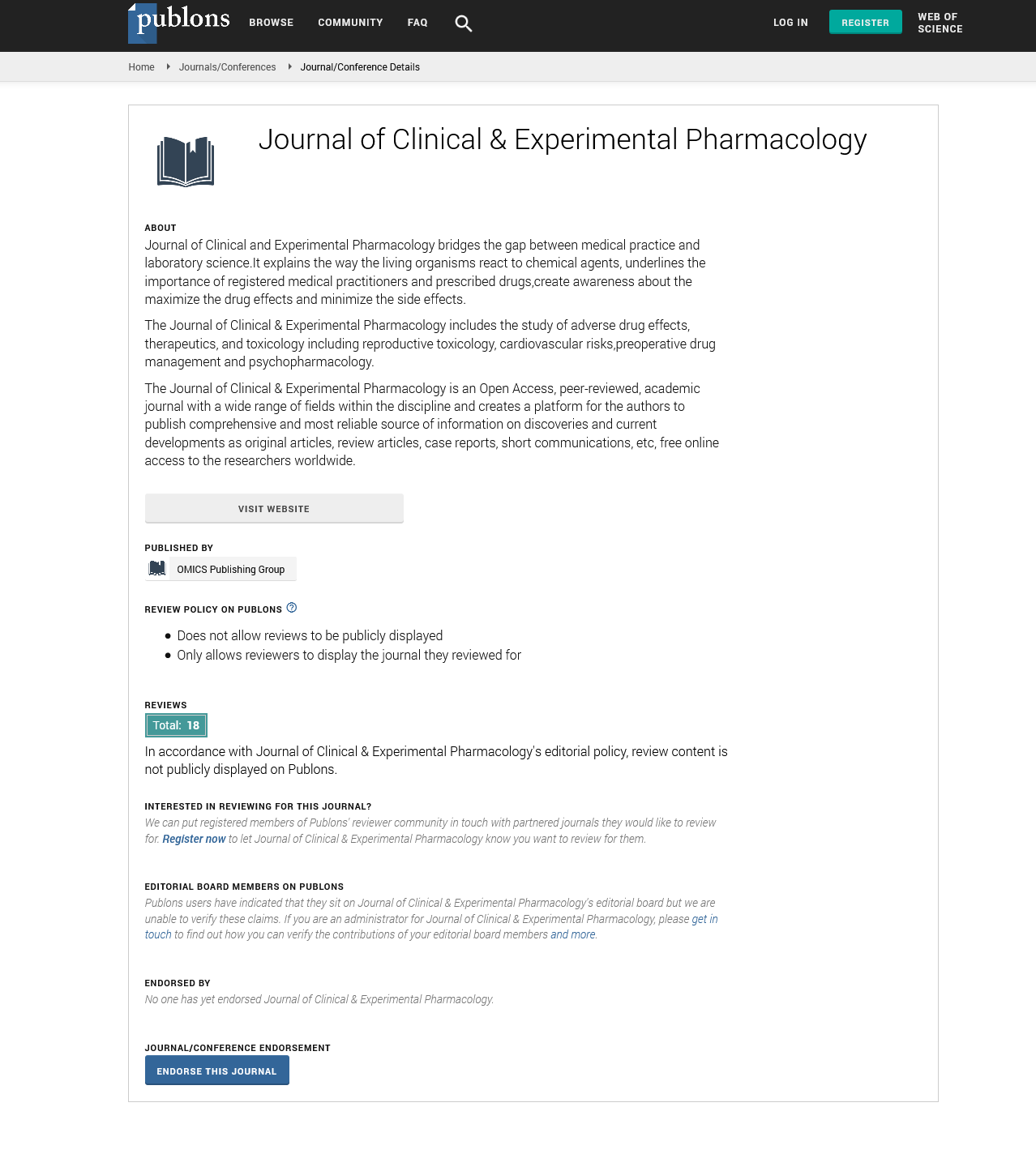Indexed In
- Open J Gate
- Genamics JournalSeek
- China National Knowledge Infrastructure (CNKI)
- Ulrich's Periodicals Directory
- RefSeek
- Hamdard University
- EBSCO A-Z
- OCLC- WorldCat
- Publons
- Google Scholar
Useful Links
Share This Page
Journal Flyer

Open Access Journals
- Agri and Aquaculture
- Biochemistry
- Bioinformatics & Systems Biology
- Business & Management
- Chemistry
- Clinical Sciences
- Engineering
- Food & Nutrition
- General Science
- Genetics & Molecular Biology
- Immunology & Microbiology
- Medical Sciences
- Neuroscience & Psychology
- Nursing & Health Care
- Pharmaceutical Sciences
Ethnopharmacological importance & Bioactivities of Snake (Naja naja) Shed Skin extracts
Webinar on Annual Congress on Pharmacology Toxicology
November 26, 2021 | Webinar
Dr. Subir Chandra Dasgupta
Maulana Azad College, India
Keynote: Clin Exp Pharmacol
Abstract:
Snakes and its body parts have been used in folk and ethno medicine of various cultures since ancient time. Evidences in Chinese and Levantine medicinal system suggested the usage of snake shed skin in treatment of several diseases. In Indian traditional medicinal system, ash of shed snake skin is used for inducing labour in pregnant women lacking scientific validation. Though used extensively by traditional healers there is no scientific evidence about shed snake skin as a source of bioactive component. This present study was undertaken to explore the bioactivity of Naja naja shedded skin and to isolate and characterize its bioactive constituents and its activity in Rodents reproductive system. In the present study it had been seen that aqueous Naja naja shed skin extract (SSS caused temporary cessation of the estrous cycle for 10 days, and altered LH, FSH, estradiol and progesterone level. It also revealed histopathological alteration in the uterus and ovary. In the pregnant rat, it altered progesterone, estradiol and C-reactive protein and eventually caused fetal absorption. In the pups, it inhibited the normal process of development. In the pregnant animal, it showed prenatal toxicity and in the pups it showed postnatal toxicity. Similar activity of toxicity in male was also observed through alteration and regression of histological structure of testis and other male reproductive parts. This is the first report on the bio activity of the Naja naja snake shed skin with special emphasis on reproductive toxicity.
Biography :
Dr. Subir Chandra Dasgupta is presently acting as Professor & Head, Postgraduate Department of Zoology, Maulana Azad College, Kolkata. He has obtained his Master Degree in Zoology in 1981 from Calcutta University and Ph.D. in 1989 from School of Tropical Medicine. Beginning his career as lecturer in Darjeeling Govt College in 1985, by dint of dedicated work and his passion for research he steadily rose to become Professor of Zoology in 2010. During his tenure of work he has published more than 45 Research articles in peer reviewed international and national journals, 3 books, in his area of teaching and more than 40 conference presentation and one International and one national patents.

